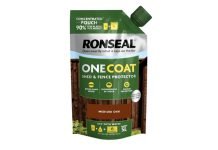In response to customer interest for rain-repellent paper bags, Mondi has developed the splash bag. This new bag resists rain for up to two hours and withstands humidity better than a standard paper bag. Standard paper bags for packaging cement and other powdery products are generally vulnerable to rain. To tackle the issue, Mondi, working in collaboration with major cement producer, Lafarge, has developed an innovative rain-repellent bag particularly suitable for cement. The new wet-strengthened, machine-finished splash bag is designed to absorb less moisture than conventional bags. Its outer ply of Mondi Advantage Protect sack kraft paper has a water-repellent surface and is formulated to keep high tensile strength even in a wet environment. It also helps prevent moisture ingress if conditions are damp or humid during storage. Advantage Protect sack kraft papers have a water-repellent surface and are formulated to have high tensile strength, to help prevent rupture. For example, Advantage Protect in a grammage of 80 g/m2 has a tensile strength of 5.6 kN/m in the machine direction – an impressive figure.
Splash bag’s water-resistive properties are immediately apparent in side-by-side visual testing versus standard paper cement bags (test conditions simulating direct exposure to rain). “Water gathers on the bag’s surface without being absorbed, then evaporates over a period of several minutes, leaving the bag essentially dry,” explains Claudio Fedalto, deputy COO, Mondi Industrial Bags. “By contrast, the standard bag absorbs the water, weakens as a result and may potentially rupture if exposed to extremely wet conditions,” he adds. Results of Cobb tests, which measure the amount of water absorbed into the surface by sized paper over a set period of time, indicate that splash bags are resistant to rain for nearly two hours. If inadvertently left in damp rather than wet conditions, for example, on damp sand, splash bag resists moisture ingress for up to 12 hours.
Even after two hours of direct exposure to rain, splash bags can be moved, handled and emptied without any difficulties. Bag breakage rates are significantly reduced, leading to genuine cost savings – fewer broken bags translate to lower vehicle and site clean-up costs, fewer trips from warehouse to site, as well as time savings for logistics and site managers. Excellent moisture resistance can also mean better protection of the filling good if conditions are damp or humid at the warehouse. Importantly, none of these advantages come at the expense of filling speeds or de-aeration rates, which match those of standard bags in tests performed on Mega Gurley equipment at Mondi’s Bag Application Centre in Austria.
According to interviews carried out at construction sites, splash bag has already won plaudits from construction workers for its ability to resist rain and moisture when used to package cement. The construction workers surveyed were particularly impressed that the bag shrugs off rain and remains strong and easy to handle even under damp conditions.











